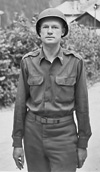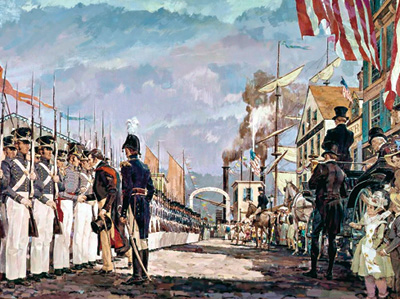Historical Milestones
A naval ordnance officer, he helped build the artificial harbor at Omaha Beach for the Normandy invasion June 6, 1944. He and his wife, Muriel, provided an endowment supporting community service; the Landis Community Outreach Center is named in their honor.

(L-R) Brown, Showell
ROLAND BROWN ’49 & DAVID SHOWELL ’51
They were among the Tuskegee Airmen, the group of 1,000 African American pilots who fought in World War II. Memorabilia about them was presented to the Tuskegee Airmen Archive by Ernest C. Levister Jr. ’58 in 2011. Brown, the second African American to earn a Lafayette diploma, was a member of the Board of Trustees from 1975-1990.

photo courtesy: Charles Parkhurst Papers, National Gallery of Art, Washington, Gallery Archives
LAMONT MOORE ’32
Lieutenant with the Monuments, Fine Arts, and Archives section, known as the Monuments Men, made famous by the recent film. He assisted with the discovery of Nazi-looted art at Alt Aussee, which included Michelangelo’s Bruges Madonna, the Ghent Altarpiece, and the Rothschild jewels.
He was captain in the U.S. Army and commander of Charlie Company of the 1st Battalion at Ia Drang Valley in 1965. His heroism is featured in the movie We Were Soldiers Once…And Young (1992), based on the book written by his commander, Col. Harold G. Moore. Edwards retired as a colonel in 1983.
A Book of Remembrance dedicated to the Lafayette alumni who died fighting in World War II is held in Special Collections and in the digital archive. [http://digital.lafayette.edu/collections/war]

The naming of the National Guard is associated with the visit to the U.S. by the Marquis de Lafayette in 1824-25. The 2nd Battalion, 11th New York Artillery, who turned out to greet him, adopted the title “National Guard” in honor of his celebrated Garde nationale de Paris. This battalion, which later became the 7th Regiment, and other state militias eventually became the National Guard, formalized by the Militia Act of 1903.
Lafayette and the National Guard, New York City, 1825, National
Guard Heritage Series